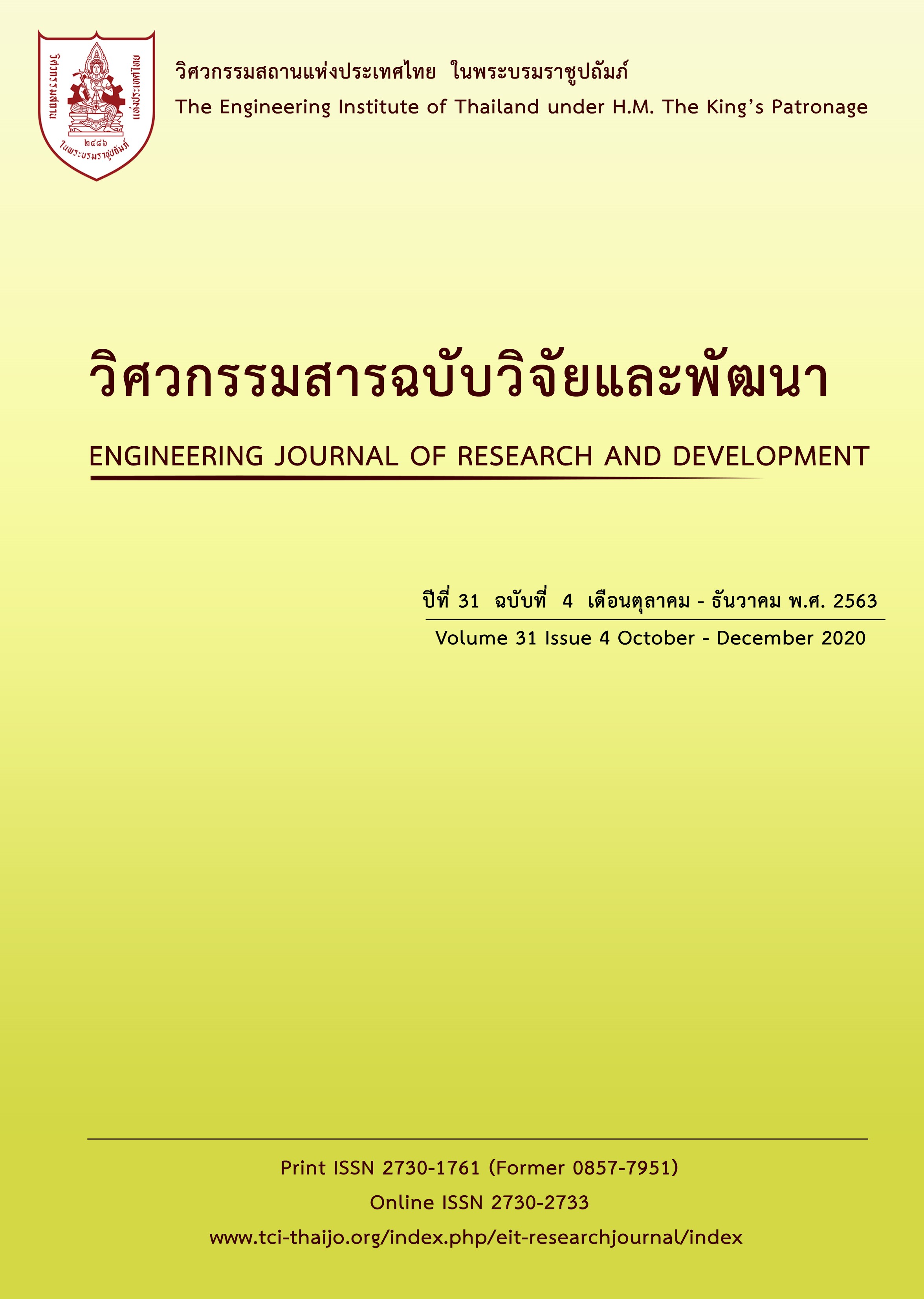DETERMINING COSTS AND TIME REQUIRED FOR BUILDING CONSTRUCTON BY USING 3D STRUCTURAL MODELS, UNIT COSTS, PRODUCTIVITY RATES, AND PROJECT SIMULATIONS
Main Article Content
Abstract
Information from 3D structural models, unit costs of construction material and labors, construction productivity rates and project simulations were integrated to estimate construction costs and time required for building construction. Construction costs and time differences between a reinforced concrete and a structural steel buildings were also determined. The two types of structure were subjected to identical requirements, building area and usage. The 3D structural models were created to determine amounts of material to be used for entire projects. The unit costs of construction material and the productivity rates were applied to evaluate material costs and activity durations, respectively. The estimated durations were used in conjunction with unit cost of labors to yield labor costs. Simulation models were developed and simulation runs were performed to determine project durations. The simulation models were validated by comparing the project durations predicted from the simulation runs with those calculated from critical path method (CPM). It was found that the project durations obtained from the two methodologies were consistent. In addition, when using simulations, some special conditions may be added to models, making simulation results more realistic. It can be seen that information from 3D structural models, unit prices, productivity rates, and project simulation were able to be integrated for the determination of construction costs and time as required. The findings also indicated that, for the projects in this study, steel structure construction cost was 39% higher than that of reinforced concrete, while construction duration of the latter was 69% longer.
Article Details
The published articles are copyright of the Engineering Journal of Research and Development, The Engineering Institute of Thailand Under H.M. The King's Patronage (EIT).
References
[2] Bentley Systems, Inc. STAAD.Pro technical reference manual, Exton, Pennsylvania, 2012.
[3] EIT Standard CE 1011-48: 2016. Method of measurement of buildings: structural and architectural works. Bangkok: EIT, 2016.
[4] Damrianant, J. COSMOS: A discrete-event methodology for construction processes, International Journal of Internet and Enterprise Management, 2003, 1
(2), pp. 128 – 152.
[5] Wisoot Jiradamkerng. Construction Cost Estimation, 4th Ed. Pathum Thani: Wankawee, 2015.
[6] Murata, T. Petri nets: properties, analysis and applications, Proceedings of the IEEE, 1989, 77 (4), pp. 541 – 580.
[7] Mills, A. Analysis of the cost performance of structural building frames in Australia. In: 7th ICEC World Congress & 14th PAQS Congress: Sustainable Cost
Management: Borderless Innovation, Singapore, 23-27 July 2010, pp. 1 – 15.
[8] SCG. Material Guild, 2013. Available from: https://bit.ly/2Tlfq3y [Accessed 28 Dec. 2018]
[9] SYS. The difference between steel and reinforced concrete buildings, 2017. Available from:
http://www.hbeamconnect.com:81/th/community/blog/VSCh20171103173154060/ [Accessed 28 Dec. 2018]


